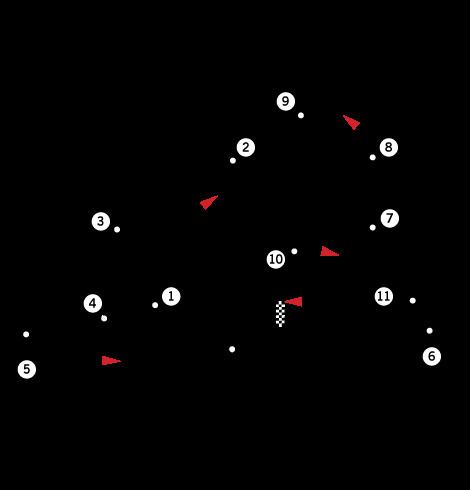Course length 5.031 km (3.126 mi) | ||
 | ||
Official name XVIII Grande Prêmio do Brasil Course Permanent racing facility Distance 61 laps, 306.981 km (190.692 mi) | ||
The 1989 Brazilian Grand Prix was a Formula One motor race held at Jacarepaguá, Rio de Janeiro on 26 March 1989. It was the first race of the 1989 Formula One season.
Contents
Report
The FIRST team withdrew before the beginning of the season, as the car had failed a mandatory FIA pre-season crash test.
Philippe Streiff continued as AGS's lead driver for the 1989 season, but was paralysed in a pre-GP testing crash at the circuit which ended his racing career.
Ayrton Senna took pole position in qualifying ahead of Riccardo Patrese, making a record-breaking 177th appearance at a Grand Prix, and Gerhard Berger in the new Ferrari 640, which featured the first semi-automatic gearbox in Formula One. For Patrese it was actually his first front row start since he started second at the 1983 European Grand Prix at Brands Hatch, a gap of 81 races. On his debut for Ferrari, Berger's teammate Nigel Mansell qualified sixth. After the race Mansell joked that he was so convinced of his new car's unreliability that he had booked an early flight home.
Johnny Herbert (Benetton) and Olivier Grouillard (Ligier) both qualified for their first Formula One races.
At the start, Nicola Larini was disqualified for an illegal start. Mansell became the first man since Mario Andretti in 1971 to win on his Formula One debut for Ferrari, a feat that was not matched until Kimi Räikkönen won for Ferrari at the 2007 Australian Grand Prix. It was also the first race ever to be won by a car with a semi-automatic gearbox. Mansell cut his hands on the trophy following the race. He was joined on the podium by McLaren's Alain Prost and March's Maurício Gugelmin, making his first appearance on the podium. Johnny Herbert finished fourth and scored points for Benetton on his debut. Herbert, still recovering from his horrifying Formula 3000 crash at Brands Hatch six months earlier, finished 4th on debut and only 1.123 seconds behind Gugelmin and 7.748 seconds in front of team mate Alessandro Nannini who finished 6th.
The hard luck of the story of the race was Arrows driver Derek Warwick. There was a problem fitting a rear wheel during his second stop for tyres which lost him over 25 seconds. He would eventually finish in 5th place, less than 18 seconds behind Mansell suggesting that the pit stop may have cost Warwick his maiden grand prix victory.
Warwick's Arrows team mate Eddie Cheever collapsed after exiting his car following the collision involving the Zakspeed of Bernd Schneider that ended his race. Arrows actually had to modify Cheevers car after he failed the FIA safety check where a driver had 5 seconds to be able to exit their car. The new Ross Brawn designed Arrows A11 was a tight fit for the tall American and he had trouble fitting into the car before practice. Schneider, whose car carried the new Yamaha V8 engine, only got into the race after Philippe Streiff's crash and the FIA had allowed 5 pre-qualifiers to enter the main field instead of 4. Schneider would not qualify for another race until the season's penultimate round in Japan some 7 months later. His new team mate Aguri Suzuki would fail to qualify for all 16 rounds of the 1989 season.
This was the last Formula One race at Jacarepaguá. From 1990, the Brazilian Grand Prix would be held at a shortened Interlagos in São Paulo, the home town of Ayrton Senna.
